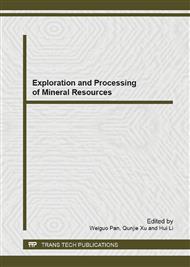p.692
p.696
p.700
p.705
p.711
p.718
p.725
p.730
p.737
Gas Flow Mechanism in Tight Reservoir and Productivity Prediction Model of Fractured Wells
Abstract:
Flow mechanism in tight reservoir is different from that in normal reservoir because of the nanoscale and micro-scale holes in the reservoir. Beskok-Karniadakis model can describe gas diffusion and flow. In this paper, Beskok-Karniadakis model was applied and optimized in consideration of the tight gas productivity influenced by both Knudsen diffusion and desorption. Furthermore, tight gass productivity of fractured vertical wells was obtained with the method of permeability resistance. In combination of examples and theory, the influence of diffusion coefficient, half-length of fractures and fracture conductivity on well gas productivity was analyzed. The results show that free gas has a close connection with total productivity. Diffusion coefficients are not the same in different reservoir, and this can also influence the productivity. For fracture conductivity, the productivity goes up with the fracture conductivity increases. A method to provide guidance of effective productivity is gotten with optimizing the conductivity.
Info:
Periodical:
Pages:
711-717
Citation:
Online since:
December 2013
Authors:
Keywords:
Price:
Сopyright:
© 2014 Trans Tech Publications Ltd. All Rights Reserved
Share:
Citation:


